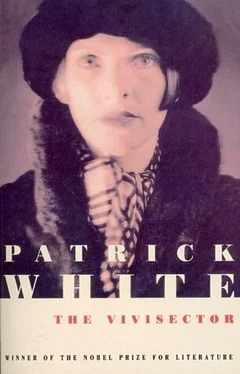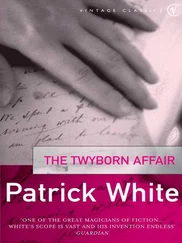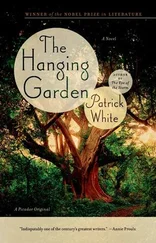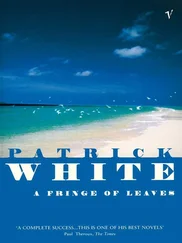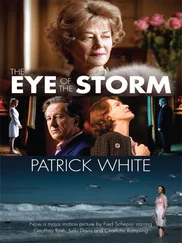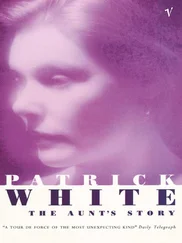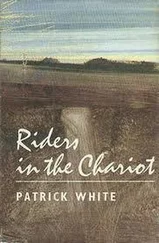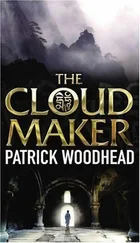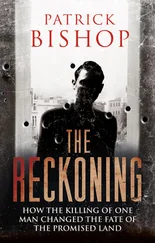Patrick White - The Vivisector
Здесь есть возможность читать онлайн «Patrick White - The Vivisector» весь текст электронной книги совершенно бесплатно (целиком полную версию без сокращений). В некоторых случаях можно слушать аудио, скачать через торрент в формате fb2 и присутствует краткое содержание. Год выпуска: 2009, Издательство: Penguin Books, Жанр: Современная проза, на английском языке. Описание произведения, (предисловие) а так же отзывы посетителей доступны на портале библиотеки ЛибКат.
- Название:The Vivisector
- Автор:
- Издательство:Penguin Books
- Жанр:
- Год:2009
- ISBN:нет данных
- Рейтинг книги:5 / 5. Голосов: 1
-
Избранное:Добавить в избранное
- Отзывы:
-
Ваша оценка:
- 100
- 1
- 2
- 3
- 4
- 5
The Vivisector: краткое содержание, описание и аннотация
Предлагаем к чтению аннотацию, описание, краткое содержание или предисловие (зависит от того, что написал сам автор книги «The Vivisector»). Если вы не нашли необходимую информацию о книге — напишите в комментариях, мы постараемся отыскать её.
The Vivisector — читать онлайн бесплатно полную книгу (весь текст) целиком
Ниже представлен текст книги, разбитый по страницам. Система сохранения места последней прочитанной страницы, позволяет с удобством читать онлайн бесплатно книгу «The Vivisector», без необходимости каждый раз заново искать на чём Вы остановились. Поставьте закладку, и сможете в любой момент перейти на страницу, на которой закончили чтение.
Интервал:
Закладка:
It was hardly to be expected that a writer who saw himself as marked out for a special, higher destiny would be taken to the bosom of democratic Australia. White made his first real mark not at home, nor indeed in England, but in the United States, where as early as 1939 Ben Huebsch of Viking Press recognized him as the kind of ambitious, experimental modernist he wanted to foster, and became his devoted publisher. The Tree of Man (1955) was a critical success in New York; together with Voss and Riders in the Chariot (1961), it secured his position among the leaders of the new generation of modernist novelists.
In the complex music of his prose and the mystical bent of his thought, White was entirely out of step with postwar British fiction, which tended toward a modest domestic realism. Only with the publication of Voss did the London critics begin to accept him as a major writer. Success in the metropolis normally guaranteed celebrity in the colonies, but in the case of White even the imprimatur of London did not at once melt the studied coolness with which he was received at home.
This state of affairs changed in the 1960s as Australians began to look to the wider world with more confidence and openness, and to pour money into prestige cultural projects like the new Opera House in Sydney. Riders in the Chariot sold well; from then on, White would be grudgingly admired at home if not loved. Though he never publicly came out of the closet in the American manner, he no longer pretended, after the death of his mother in 1963, to be straight. He called his sexual makeup “ambivalent,” and claimed that his in-between status allowed him insights into human nature not accessible to “those who are unequivocally male or female.” Advances in medicine relieved attacks of asthma so devastating that they had sometimes landed him in hospital. He and Lascaris sold their smallholding and moved closer to the city. White began to take a more active role in political life, joining protests against conscription for the Vietnam War, against uranium mining, and later, in 1988, against the celebration of two hundred years of British settlement in Australia. When Penguin Books, upon publishing Philip Roth’s Portnoy’s Complaint, was prosecuted for disseminating pornography, White appeared as a witness for the defense.
The Nobel Prize, which White won in 1973 ahead of a strong field that included Saul Bellow, Norman Mailer, Nadine Gordimer, Wole Soyinka, Chinua Achebe, and V. S. Naipaul, made him famous. Yet even as he became a national figure — Australian of the Year in 1973—influential critics, particularly within the academy, were losing interest in him. To Marxists he stood for elitist high art; to cultural materialists he was too much of an idealist; feminists felt he was a misogynist; to postcolonialists he was too wedded to European canons and too little concerned with the advancement of Australia’s Aboriginal minority; to postmodernists he was simply a belated Modernist. In schools and universities he began to drop off the reading lists. By the end of the century, ten years after his death, his name had faded from the national consciousness.
White never took a strong role in the affairs of the Australian literary community. He did not write for reviews or for the press, gave few interviews, did no publicity for his books (“I find it all nauseating; and in any case my life is not the least bit spectacular”), did not fraternize with fellow writers. He and Lascaris tended to favour the company of painters and actors; he became a connoisseur of Australian painting, and toward the end of his life a generous donor to public art collections.
White’s art education had begun in London in the 1930s, at the hands of the expatriate Australian painter Roy de Maistre, through whom White met Francis Bacon. In Australia his circle included Sidney Nolan. All three of these painters, and others too, went into the making of Hurtle Duffield, the artist hero of The Vivisector (1970).
Duffield, as White revealed in his memoir Flaws in the Glass (1981), is “a composite of several [painters] I have known, welded together by the one I have in me but never became.” Born (unlike his creator) into a poor working-class family, the young Hurtle is in effect sold by his father to a wealthy Sydney family, the Courtneys, who have no son and no prospect of one, to be brought up (like his creator) in affluence.
The Courtneys take in Hurtle, and later legally adopt him, because they detect something exceptional in him. They are not mistaken. Hurtle Duffield, later Hurtle Courtney, later Hurtle Duffield again, is a genius of the archetypal Romantic type: a loner, driven to create by an inner demon, a maker of his own morality, who will sacrifice everything and everyone to his art.
Born at the turn of the century, Hurtle at the age of sixteen flees the threatening embrace of Mrs. Courtney, enlists in the army, and goes off to the Western front. After the war he spends a hand-to-mouth year in Paris steeping himself in the new European art, then returns to Australia: The option of expatriation seems not to occur to him. With the proceeds of his first sales he buys a block of land on the fringes of Sydney, where he lives in seclusion, devoting himself to his art. Gradually he wins a reputation among the Sydney cognoscenti, and is able to move to a large old house in the city.
Though rendered in the fullest detail, the life of Duffield up to this point is really only a preliminary to the phase of his life that truly concerns White: the phase from his mid-fifties until his death, when all the options on offer have been explored, the pattern of his life has been established, and the true struggle can begin between himself and God. White belonged to no church, but as he grew older was ready to profess an uncertain belief in a universe presided over by a creator God, and in an urge inborn in the human breast to reach out toward God — an urge stifled by too much comfort and too much civilization. Duffield’s vision of God is a bleak one: God is the great Vivisector, who for his own inscrutable purposes flays us and tortures us while we are still living.
White’s plots tend to be rudimentary. The Vivisector is held together not by plot — its plot consists in just one thing after another — but by the growth of Duffield as an artist and a man, by the power of White’s idiosyncratic verbal style, and by a set of thematic motifs that are enunciated and then repeatedly returned to, in the process accreting meaning, much as a sketch is gradually reworked into a painting. Vivisection is one such motif. For God turns out to be not the only vivisector at work; as his lover, the prostitute Nance Lightfoot, comes to see, Duffield himself uses the women who enter his life for experimental purposes. “The only brand of truth [Duffield] recognizes is ’is own it is inside ’im ’e reckons and as ’e digs inter poor fucker you ’e hopes you’ll help ’im let it out. . By turnun yer into a shambles. . Out of the shambles ’e paints what ’e calls ’is bloody work of art!” [p. 244] Street argot here enables Nance to make key connections between sex and evisceration, painting and disfigurement.
Early in his career Duffield meets a young man, Col Forster, whose ambition is to write the Great Australian Novel. Without reading a word Col has written, Duffield knows he will fail. Col has “a thick-looking skin. . blunt teeth. . kind fingers”: to be a great artist you need a thin skin, cruel hands, and teeth like a tiger. Working on a self-portrait, Duffield feels as if he is slashing at the canvas, and at his own face, with a razor.
Another motif on which The Vivisector dwells is disfigurement, in particular the hump on the back of Rhoda Courtney, which makes her a figure of both horror and fascination to her brother. From a single remembered glimpse of her naked, he paints her in the posture of a priestess, and returns to the painting at intervals to consult it and find new meaning in it. Duffield and Rhoda end up living together, held together by a force of love indistinguishable from exasperation and hatred, both suffering, as Rhoda recognizes, from “something incurable” that goes deeper than her deformity or Duffield’s solitariness, some special vision of the darkness at the end of the tunnel that renders them unfit for ordinary life.
Читать дальшеИнтервал:
Закладка:
Похожие книги на «The Vivisector»
Представляем Вашему вниманию похожие книги на «The Vivisector» списком для выбора. Мы отобрали схожую по названию и смыслу литературу в надежде предоставить читателям больше вариантов отыскать новые, интересные, ещё непрочитанные произведения.
Обсуждение, отзывы о книге «The Vivisector» и просто собственные мнения читателей. Оставьте ваши комментарии, напишите, что Вы думаете о произведении, его смысле или главных героях. Укажите что конкретно понравилось, а что нет, и почему Вы так считаете.
